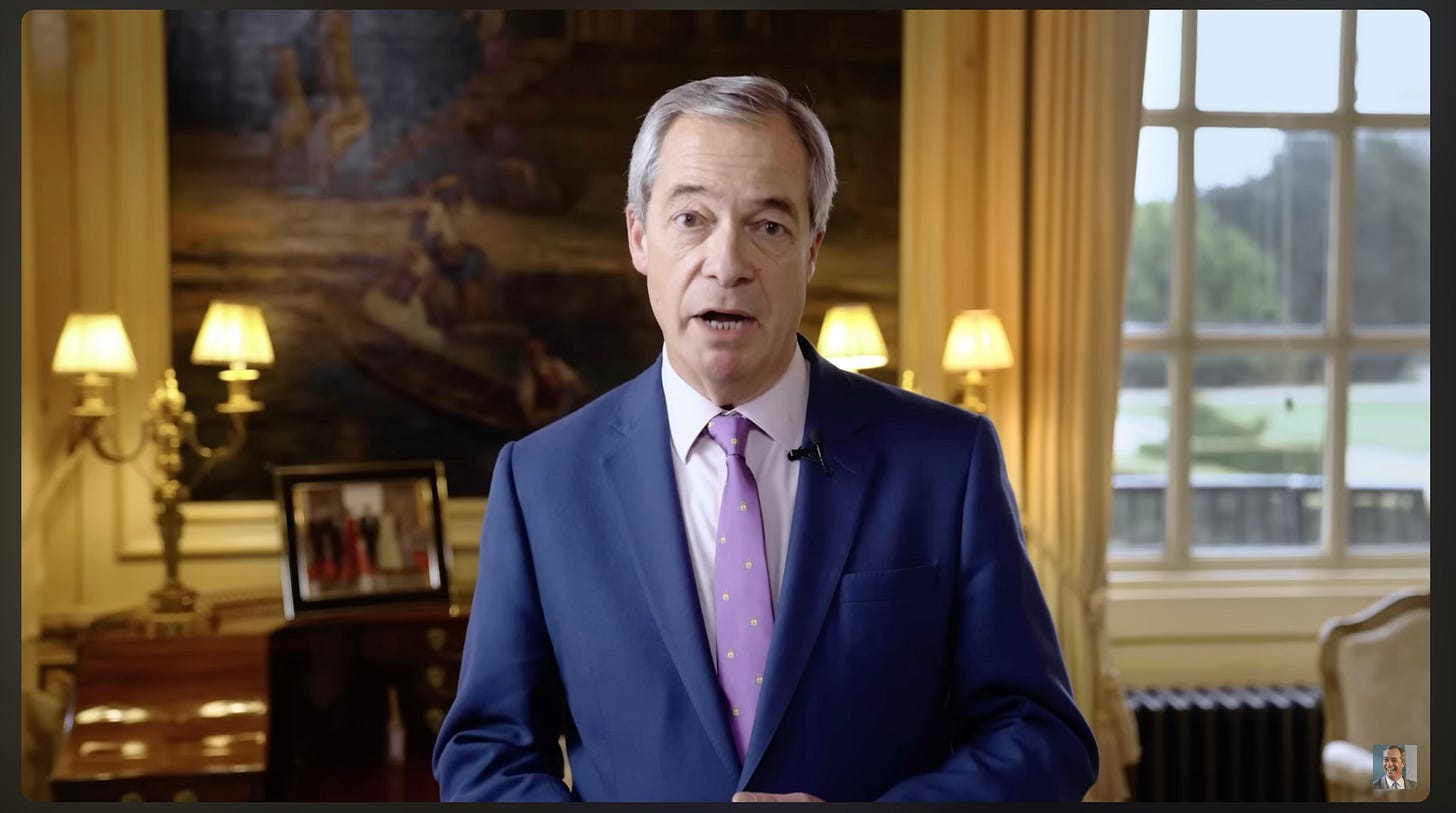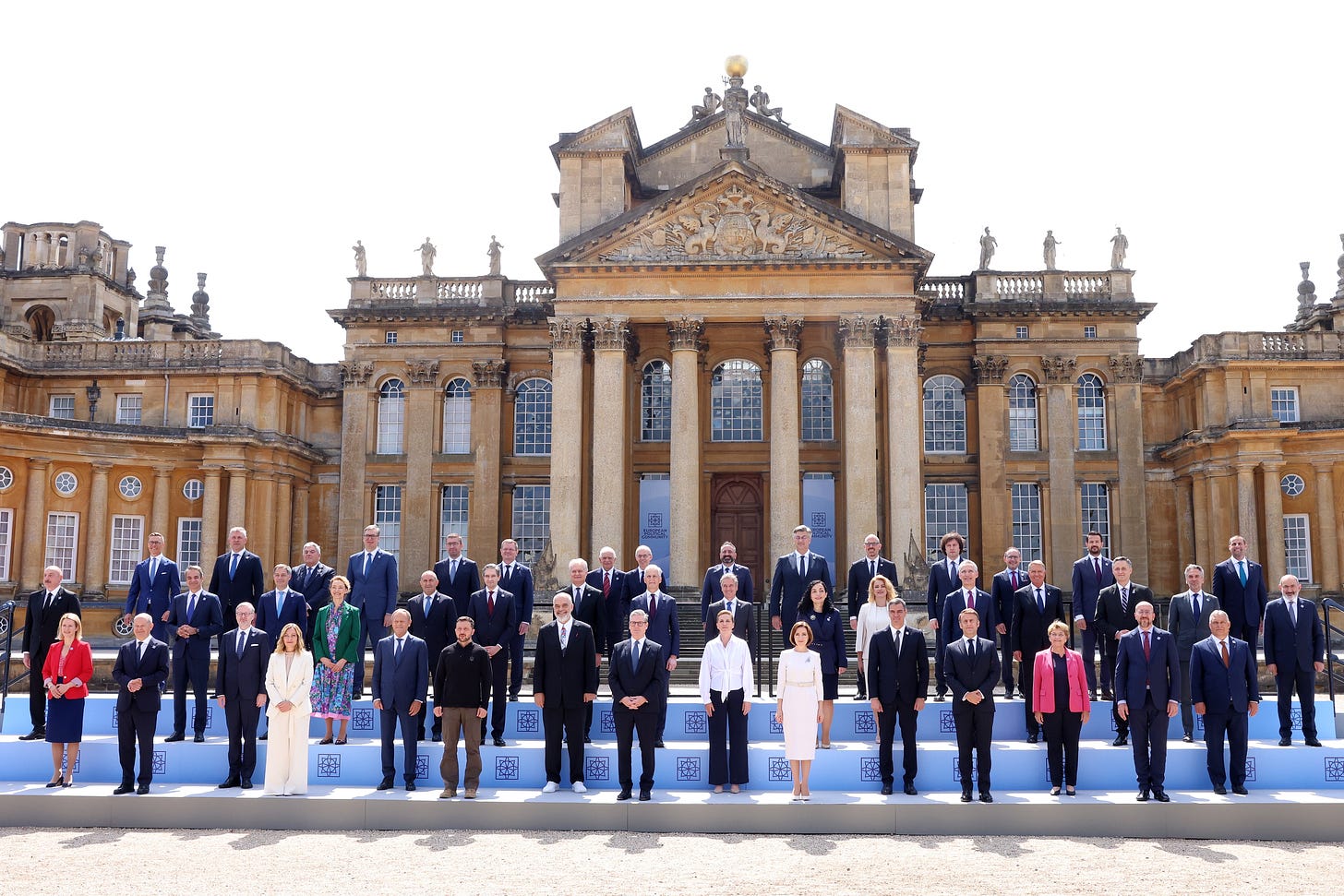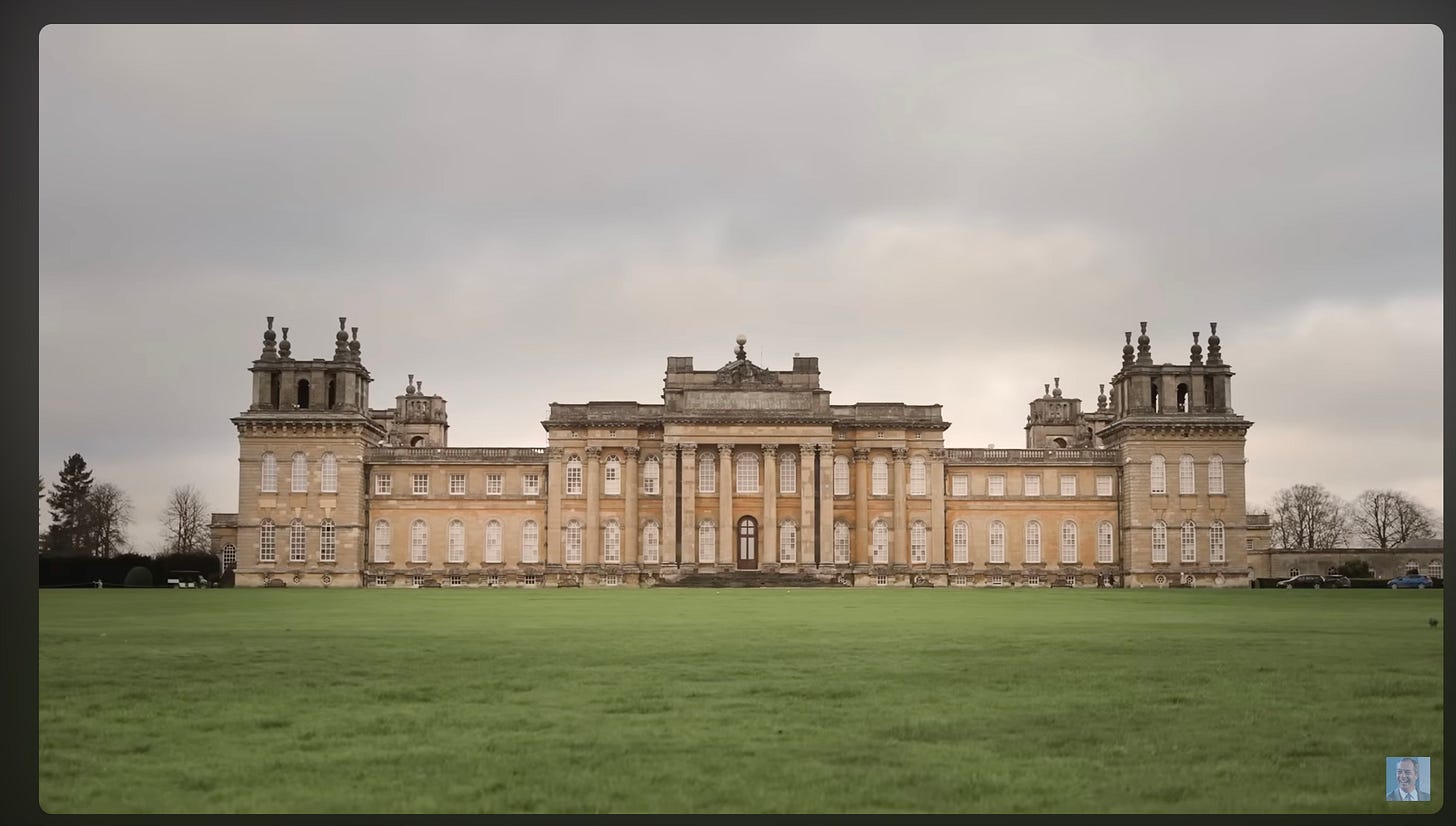One of the criticisms of the National Trust being woke, of academics talking about colonialism and stately homes and me writing a book about these vast houses is that there is no point to it. The stately homes of England are just relics of the past. They don’t matter any more and have no meaning so why keep going on about it.
This is, of course, nonsense, which you can tell by the fact that it’s being said so loudly and so often, by people who seem quite invested in it getting cross about it1. Which suggests that perhaps these places do still resonate with meaning and are worth interrogating.
Every so often, something pops its head above the waterline to prove this. Unfortunately, this time it’s Nigel Farage’s New Year’s presentation to the nation, which he has chosen to do from a room in Blenheim Palace. I’ve watched it so you don’t have to.
Let’s deal with the easy stuff first. Yes, Farage clearly believes that he is on some level entitled to do a Royal Broadcast to the nation and no, Blenheim is nowhere near his constituency of Clacton. So why has he chosen to be in this posh yellow room to opine at us?
The obvious answer is of course that Blenheim is the birthplace of Winston Churchill and Farage spends almost as much of the film banging on about Churchill as he does talking about himself. Churchill apparently represents when Britain was a great country and was gloriously independent of Europe even before Brexit, and at this point I got a bit confused as various concepts are being jammed together without any application of narrative or logic.
So, anyway back to Churchill. He was born at Blenheim (entirely by accident, two months prematurely and unplanned) but that doesn’t mean that he was welcome there. When Consuelo Vanderbilt married the 4th Duke of Marlborough, she was told by her new grandmother-in-law that “Your first duty is to have a child and it must be a son because it would be intolerable to have that little upstart Winston become Duke.”
It’s also worth noting that Churchill was not a huge fan of the aristocracy and their houses in return. In 1904 he became a Liberal, and not only campaigned against hereditary peers and for the break up of the great estates, trying to set himself apart from the whole system.
“I could not help thinking last night what a wrench it is for me to break with all that glittering hierarchy and how carefully one must organise one’s system of thought to be utterly independent of it.”
Farage isn’t the only one who’s trying to retrofit Churchill onto Blenheim. Your admission fee these days includes his Birth Room and a small museum of the life of that little upstart. But it’s possibly not what the man himself would have wanted or liked.
However, this isn’t the only connection being put into play here. The Daily Mirror has taken a long hard look at the photograph behind Farage and worked out that it seems to come from Donald Trump’s visit to Blenheim in 2018.
‘Can you spot the hidden message in Nigel Farage's New Year address?’ is their title. Given that Trump gets almost as much airtime as Churchill in the five minutes of video, I would argue the message is not that hidden but the connection is still very relevant.
Blenheim has an interesting history of being a kind of surrogate national palace to which we bring foreign politicians. It’s not just Trump. In 2024, a summit of European leaders was held here, a decision that was most likely taken by the Conservative Party even though Keir Starmer and Labour had to host it.
I imagine they, at least, were embarrassed to be in such a place. It’s not just that the meeting was being held at a stately home in general, representing hereditary power, inequality and the endless tyranny of the upper classes. Blenheim also has a very particular story, being built for the 1st Duke of Marlborough by the state to celebrate his victory over the French (something which can be read all over the facade and interiors if you want to take a close look). So it’s the Brexit of grand houses, a giant two fingers up to the continent. No wonder that Farage is smirking so comfortably in its yellow room.
But what the presence of the photograph of Trump’s also suggests is that Farage and his froggy face are not just sitting in a landscape of signs by accident2. He is clearly making a set of connections that we are meant to read, subliminally in addition to his words.
Which means that the house itself does matter. The film begins not with politicians or immigration or even Farage himself but with a great big wide shot of the facade of Blenheim.
There is so much we could unpick in this, from the obvious signifiers of aristocracy, inheritance and inequality I’ve mentioned above to the classical architecture - implication, the upper classes have been in charge for literally thousands of years so don’t even try to think about changing things, with a side order of please feel inferior for not having studied the classics. Then there’s ‘tradition’ and ‘Englishness’ - if you are not white, where do you put yourself in this landscape, in relation to this building? Or indeed if you were a woman, whose only job was to have an heir and prevent a little upstart inheriting. So much to say that, in fact, it might take up an entire chapter of a book.
But the crucial point is that this building is not inert or meaningless, far from it. Instead it’s playing its significant part in Farage’s empire of signs, representing a lack of change and modernity, a world view of an England for white people, a country where everything remains as it always has been, with people like him in charge and the rest of us very much as subjects.
So, in short, I need to keep writing the book.
The obvious case here is Restore Trust which has invested a lot of money and energy into trying to stop the National Trust being woke. No one knows exactly where the cash is coming from and I find the whole thing not just bewildering, but also a demonstration of the fact that these buildings are clearly - to someone - very much worth fighting over. And therefore probably not irrelevant.
He’s also not the only right wing politician to be using these subliminal messages of place. In The Hard Way (available now from all good bookstores, etc) I wrote about Jacob Rees-Mogg, who made a similar kind of pro-Brexit film standing at the stone circle of Stanton Drew. The megaliths, although at least in his constituency, were clearly not going to be affected in any way by contemporary politics; their purpose was to be a symbol of ancient Englishness, of a time before foreigners and the continent. Which is of course cobblers too but - and this is the crucial thing - unarguable because not said out loud.








Thank you